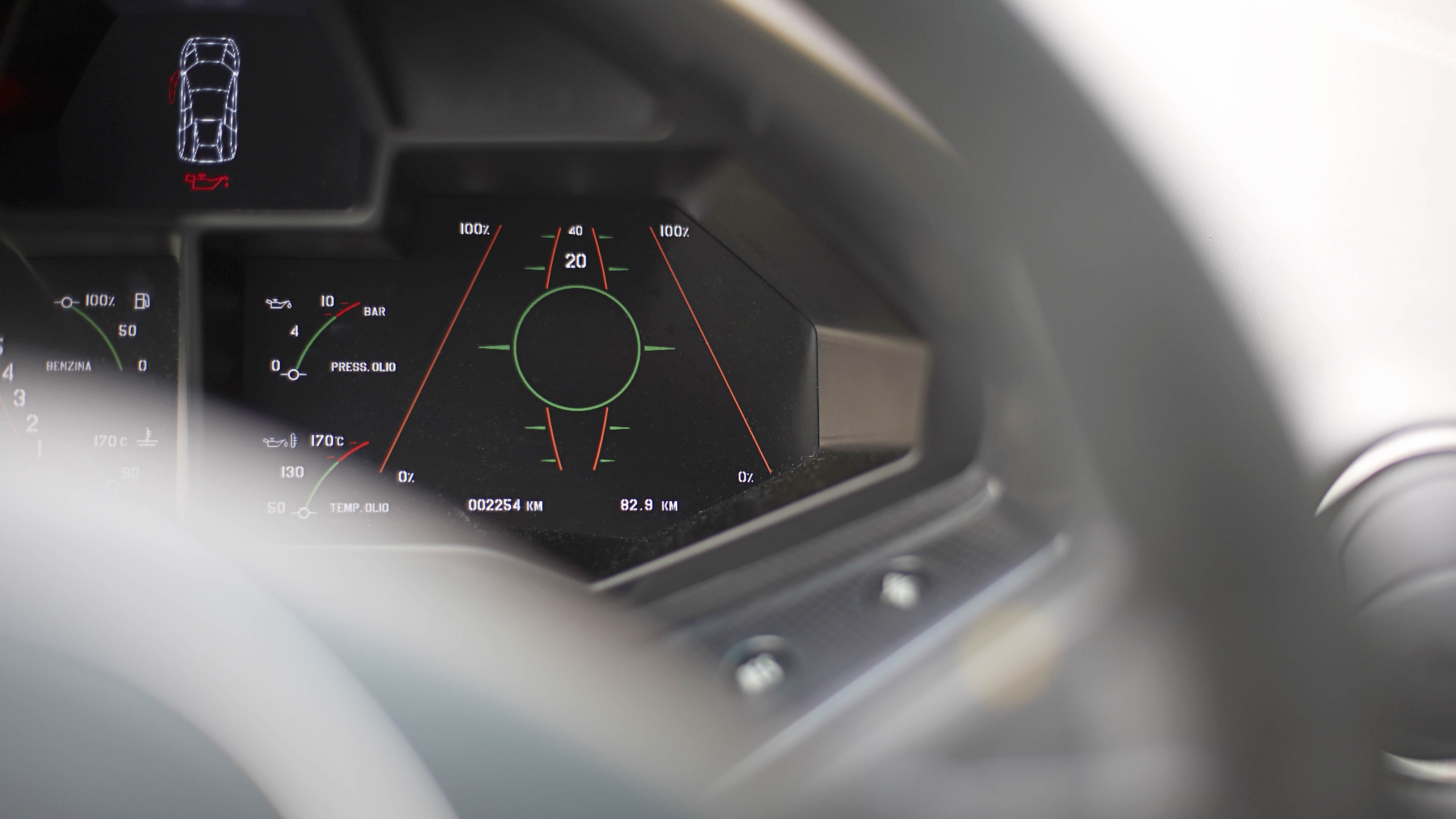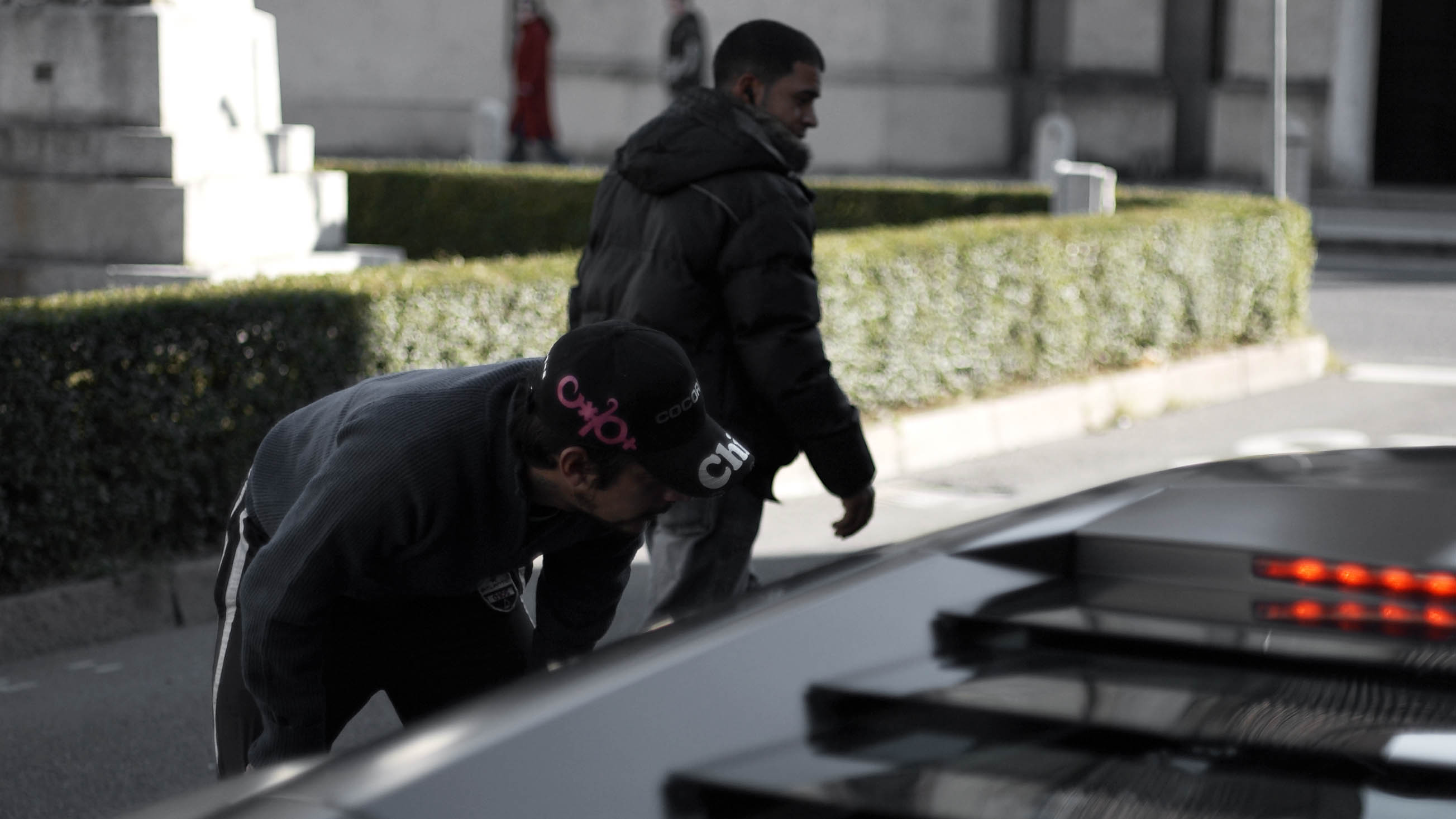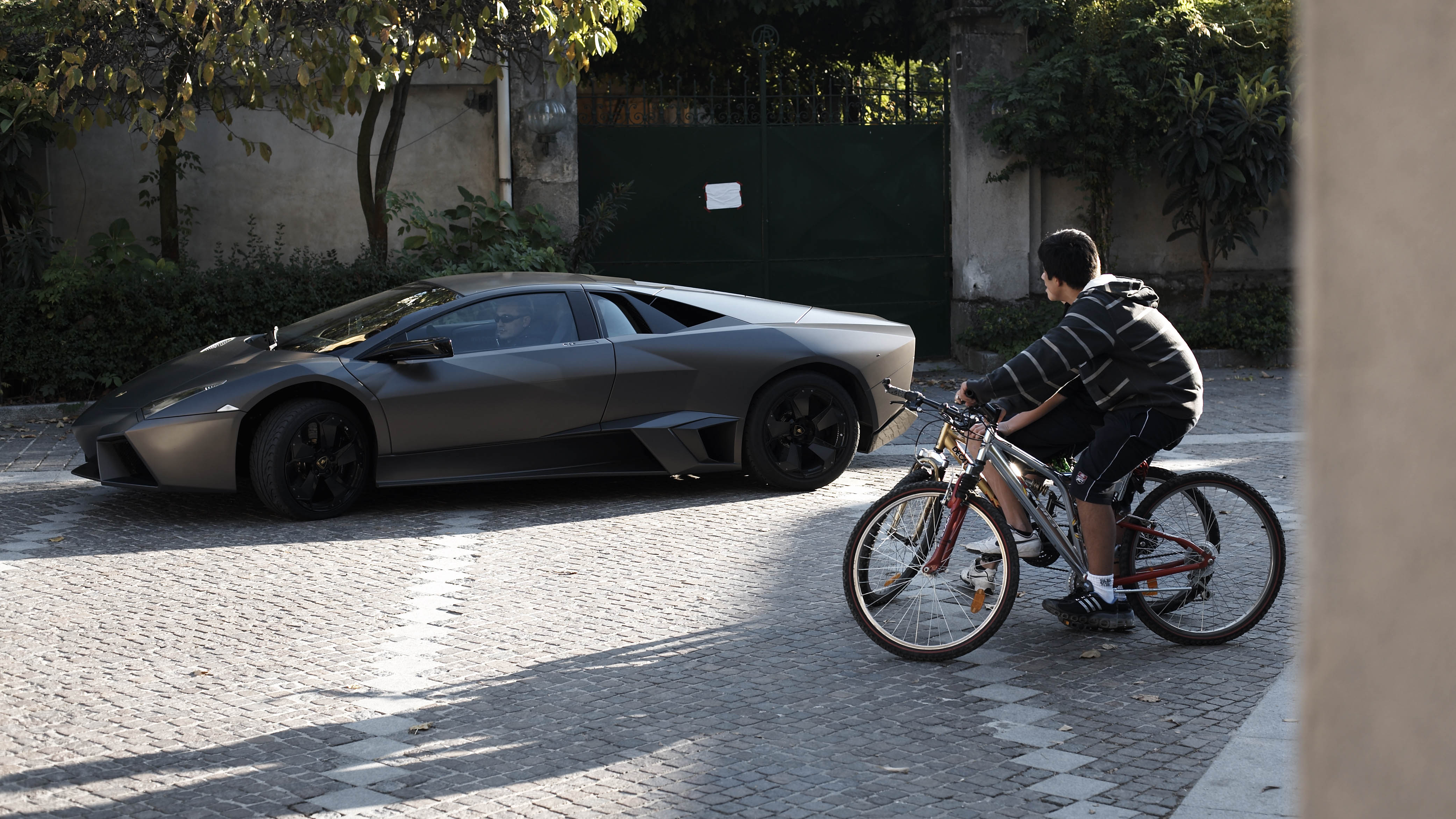
From the archives: TG’s exclusive Lamborghini Reventón drive
Into the blender goes Murciélago modernity, Countach cool and the military stealth of a fighter jet. Out the other end comes the Reventón. A throwback to TG’s exclusive 2007 first drive
If the man from Athena is not here, then he jolly well ought to be. For a purveyor of bedroom wall posters this really is not a day for oversleeping. If I were him, I wouldn’t want to explain to my bank manager why I wasn’t hanging around at the perimeter fence with a long lens, when the rarest, most expensive and most powerful Lamborghini ever built rolled out of its shed for the first time.
You see, the €1m Reventón has never before been seen on any earthly surface other than the plastic of a motor show stand, and has never been driven by anybody whose business card does not say: ‘Giorgio Sanna, chief test driver’. Until today.
Words: Greg Fountain
Images: Lee Brimble
When I was a kid, I nurtured the standard-issue twin dreams of becoming a fighter pilot and of one day driving a Lamborghini, and today – 20 October, 2007 – I’m going to do both.
The perimeter fence in question surrounds Top Gear Italy’s secret testing facility, just outside Milan. It’s here that Lambo’s transporter has pitched up accompanied by an army similar in size to that of Azerbaijan (but with nicer uniforms) to deliver on a promise brokered a few short weeks earlier when the car was unveiled to the world at the Frankfurt motor show – that Top Gear would have the world’s first drive.
Let’s be honest with each other from the start – I’m nervous, and with good reason. This is the car that Lamborghini has built for those who think the Murciélago LP640 is a little understated, a little tame perhaps, a frisson light on power. Naturally enough, there are only 20 people in the entire world sufficiently nuts to believe this, and each of them has already shelled out the GNP of Sierra Leone to secure the car of their dreams, one of which now stands before me, its roofline level with my belt buckle. Might be a good idea not to crash it.

There has never been a non-tractor Lamborghini that was anything other than visually stunning, but it’s clear even from outside the gates that another level has been accessed by the Reventón’s conspirators. I can immediately see a lime-green Murciélago parked beside the pit garages, and it draws the eye with the exotic exuberance with which Sant’Agata has long been blessing the world, but it’s a decoy. Behind it, its angular arse peeking out from the garage, is something that looks like a prop from a big-budget sci-fi movie. A geometric jumble of lines, angles and creases seemingly the colour and texture of granite, it absorbs light rather than reflecting it, creating an unearthly sense of new materials – intergalactic know-how brought to bear on terrestrial territory. “Guess that’s the Reventón, then?”, I ask of no one in particular. Guess so.
Of all the things that strike you, the colour – or the dulled sheen – hits you first, because it’s so unthinkable. Cars should shine and glitter and fizz, but this is a battleship, a cold-war jet capable of popping undetected over to Russia and posting a smart bomb through exactly the right letterbox from 50,000 feet. It feels like the effect you might get if you buffed sheet metal until it glowed, and then sealed it with matt lacquer. No paint involved. The irony is, the Reventón is not made of metal. They’ve gone to all this trouble to create a carbon-fibre masterpiece, and then had to invent a paint that, by virtue of being infused with metallic particles, resembles flat steel.
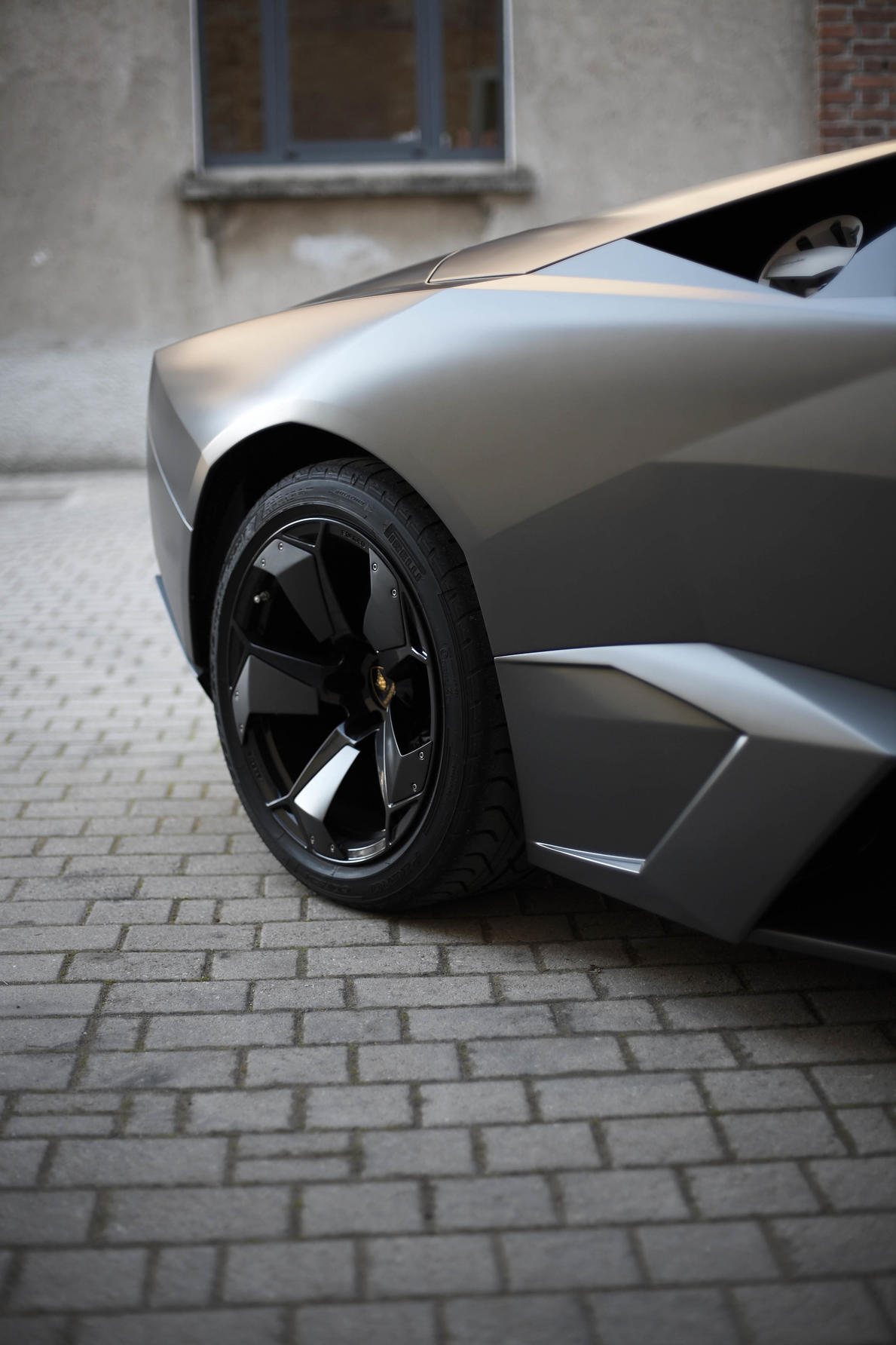
Like most of the Reventón’s DNA, this isn’t pure vanity. The car’s lines are so intricately surfaced they resemble delicate origami, and without an opaque finish, the thing would look like it were made of Lego. Witness the wheel arches, which are not smooth arcs but multi-creased approximations of an ellipse, as if the shape was created by a version of the elephant in Peugeot’s famous Indian panel-beating ad for the 207.
The charge of vanity does, however, hang thickly in the air when somebody from Lamborghini starts talking about bombers, or more specifically the F-22A Raptor combat jet from which the Reventón crew derived inspiration. OK, you can concede that there is something stealth-like in its make-up, something about it that wouldn’t look awry nosing out of a backlit, dry-ice-furred hangar, but the analogy grinds to a halt. Stealth jets look like they do in order to be invisible to radar, and the Reventón, for all its intent, cannot pull off this trick. If the car truly could glide uncaptured at 211.3mph past a policeman with a gun, then it would begin to look a bargain. But, bearing in mind you can’t help but look at it, it’s less stealthy than a knight in armour on a spacehopper.
Even so, there’s more to the surfacing than mere Blackbird envy. The Reventón has done its flying hours in the wind tunnel and emerged into a world in which its sister, the Murciélago, is no longer slippery queen. Without the aid of body spoilers, but armed to the teeth with the mother and father of undertrays, massive front air intakes, asymmetric side pods and a complex rear diffuser, Reventón cuts the theoretical air like a scalpel with all four of its driven wheels glued. How much of the Cd magic is down to the microsurfacing is a moot point. What matters is that there’s integrity in this project, not mere posturing. The car is built not just to amaze but to deliver, to perform, to over-achieve against expectation. In short, to distil the essence of the DNA and reassure the doubters for whom Lamborghini’s pure bloodline was forever contaminated by marriage into the Audi family.
And what is the DNA all about, if not performance, if not brutal acceleration, cornering witnessed through the side window and impossibly late braking? What is rakish design, without such performance?
Top Gear
Newsletter
Thank you for subscribing to our newsletter. Look out for your regular round-up of news, reviews and offers in your inbox.
Get all the latest news, reviews and exclusives, direct to your inbox.
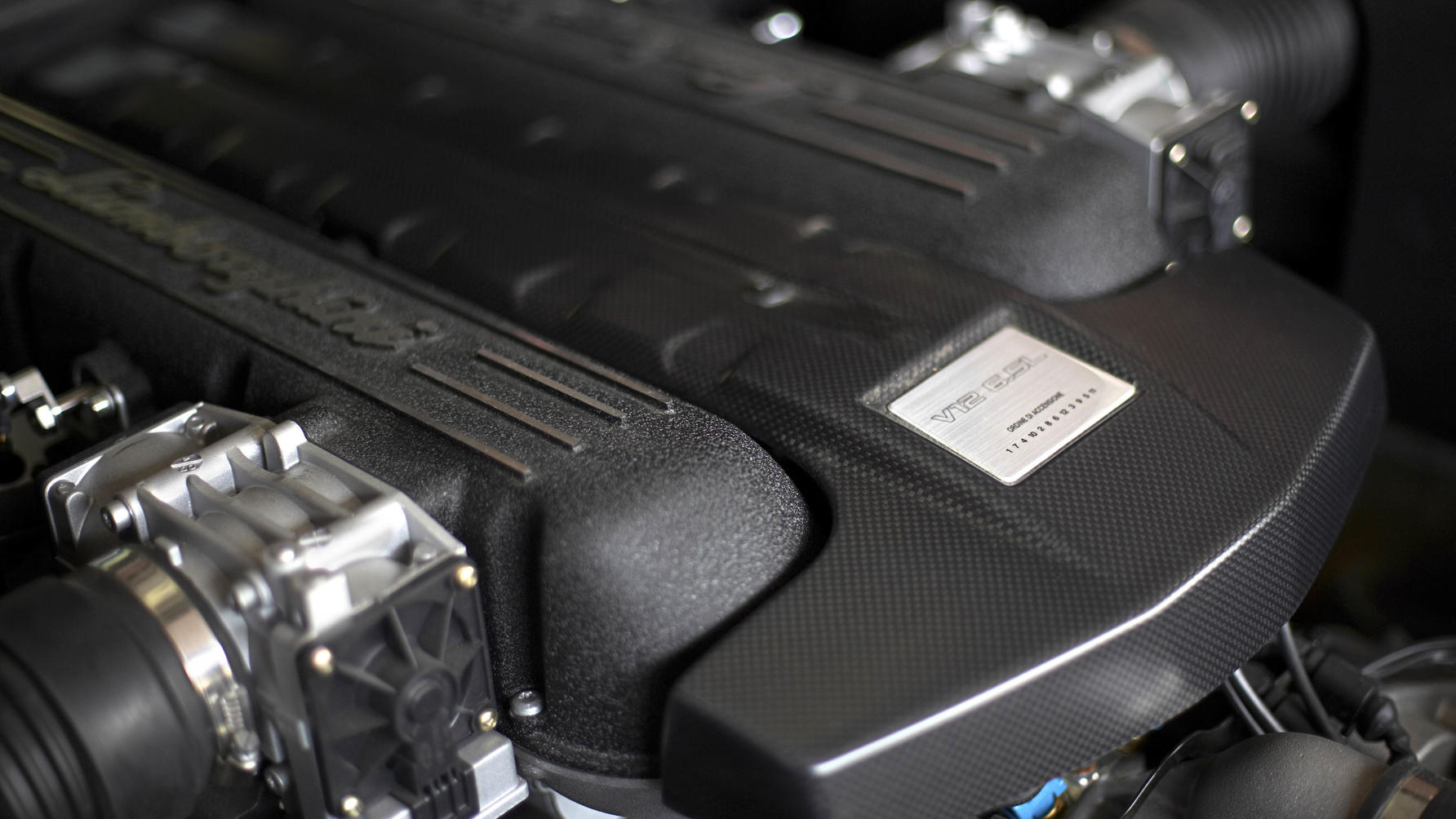
Today, we find out. Except we don’t – not quite – because they don’t want us to drive too fast. What? They don’t want us to extend the car too far, to get too close to the red line in any gear. Eh? The aluminium plate set in the centre bulkhead at shoulder height between driver and passenger reads ‘0/20’, which means in a worldwide super-limited run of just 20 cars, this is car zero. Or, to put it less cleverly, it’s the one they’ve earmarked for the Lamborghini museum.
On the one hand, ‘great’ – my fears of being duffed up by a crazed Russian oligarch whose black-painted aluminium wheels (with carbon blades riveted to each spoke) I have just kerbed, evaporate like the Milanese drizzle; on the other hand, ‘crap’ – we’ve come here to drive arguably the world’s most unattainable supercar, and find ourselves hamstrung – as we might be if we had to test drive a Formula One car on the pit-lane limiter.
But wait – under the aeronautical camouflage, this is still a Lamborghini, which means that on a tight, twisty track like this, we would never get to the limiter in anything other than first and second gear anyway, and as for 200mph, well, that’s just a fantasy. We’ve got two kms of runway here, but even the F-22 itself won’t hit warp in that distance, and anyway what’s a straight line going to teach us in the final analysis?
So calm ensues, but there’s a further, more revealing calm to be absorbed, and it brings us unexpectedly to the nub of the debate – the reality behind the dream we’ve come to gatecrash. this is not a mere motor car – its relationship with the ancient discovery of forward motion via internal combustion is beyond rebuild – but a museum piece, an art gallery exhibit. Or, to coin the exact parlance, a commodity – an asset, an investment. ‘Of course, he got into supercars just at the right time. Bought a Veyron, an FXX and a Reventón.’ ‘A Reventón? You’re kidding!’ You get the picture.
You do not buy a Rembrandt and then hang it above the fireplace in your pub. You loan it to a museum, bubble-wrap it, stick it in a vault, and wait for its value to accrue. Likewise, you don’t floor a Reventón – you exhibit it. So, since driving isn’t the main issue, the limitations shouldn’t spoil our enjoyment too much.
But, sorry – nonsense to that. They’ve taken the Murciélago LP640 which, by common consent, is already a fabulously louche, planet-crushing, chest-vibrating beast of a car, given it to their rabidly under-excited geniuses in ‘Centro Stile’ (Lambo’s Sant’Agata-based drawing room) and told them to ‘compress the DNA’, ‘out-extreme the extreme’ and ‘build the greatest automotive superlative ever’. Which they have done. And now we’re jolly well going to do what none of its 20 owners are likely to do – enjoy it.
Admittedly, the day gets off to a bad, bad start. It’s raining when we arrive, and the track is greasy when my colleague Marco (a second slower than Prost!) takes me on a familiarisation lap of the circuit in a Nissan 350Z. Three corners after I take over the wheel, I’m on the grass, up the bank, axle-deep in agriculture. Marco disguises fear as laughter, but I think we’re both thinking the same thing – thank God it wasn’t the Lambo.
Hours later, on a drying track, it is.

Marco’s already been lapping, showing how it’s done, and I’ve heard the engine bouncing off the faux-limiter, as he fires up the back straight, but even at full chat, he’s never into fourth, not properly. And the engine, despite the fact it’s that V12, mounted where we love it and feel it most, behind our ears, and despite the eking out of 10 extra bhp above the Murciélago (from 631 to 641), sounds underplayed, lacking in drama. If you’ve listened to a 599 yowling, you’ll know the sound we’re hoping for. It’s absent.
Then I’m in the car, struggling to fit Mel Smith-spec arse into carbon buckets moulded around someone like factory test driver Mario Fazanetto, who sits beside me, worrying. The scissor door clunks down, and I’m face-to-face for the first time with... the dashboard. The confidence I’d been stockpiling all afternoon exits, stage left. It appears I’m being expected – without training – to get an airbus off the ground. This is the bit which explains the earlier remark about flying a fighter jet – the allusions to F-22A Raptor inspiration make plenty of sense when you check out the instruments, although in truth they would make as much sense if Battlestar Galactica or Blake’s Seven had been credited. Or Knight Rider.
If we all harbour thoughts of the Seventies and the Countach as Lambo’s finest hour, then there’s much material here. The Reventón’s etch-a-sketch rear end may be Countach revisited, but the instrument binnacle, milled from a lump of aluminium with a carbon case, houses the set of dials that great icon ought to have been equipped with.
OK, ‘dials’ is the wrong word. We’re talking about three liquid-crystal displays, housing data that is biased away from the speed of the car and in favour of the speed of the engine. Reading the helmet display on the left gives you revs and change-up points, while directly ahead, the g-force indicator explains why your neck hurts. It’s all the info you’ll need, maybe more. If it’s all too much, you can flick a switch and introduce a ‘quasi-analogue’ set of dials. As for me, I’m concentrating on the two knife-thin carbon paddles tucked behind the Alcantara and carbon steering wheel.

So we drive. My throttle foot is twitchy, and the first few corners are a mess of over-corrected steering and ill-advised lift-off. But once I’m through turn three and past the gouges of my earlier gardening excursion, the Reventón opens its gates. The engine may sound hesitant outdoors, but in here, it thwarps pleasingly in your ear, tickling your diaphragm with each e-gear shift. Less violent and more linear than Ferrari’s super-box, it massages the engine, woofling the revs back on upchanges, braking sweetly on the downshifts. As usual, there’s really only a couple of e-cogs to play with, even with the limiter. The car grips tenaciously, corners with a fluid swagger and boots out of the exit with the sort of whooping drama every Lambo owner will always demand.
But it’s not a track car. It’s not a Ferrari, not even a Porsche. It’s a sculpture, and that’s what it looks like from outside and from within, as it hunkers down onto the track to prove what it can certainly do, but will never have to.
Out on the road, we briefly discover that it’s not a road car either. Too wide, too low and with a ride so hard it genuinely hurts, it taunts you with its potential while you thread through the village, scattering wide- eyed, zombie-like citizens and extremely curious law-enforcers. Then you quickly take it home, polish it once more and ease it into your temperature-controlled garage or, better still, your art gallery.
We arrive back at the track to find a small cluster of people outside the gate, one of whom might perhaps be the man from Athena, hoping he’s not too late to immortalise the Reventón in the eyes of the world’s teenagers as his predecessors did the legends Miura and Countach.
Has Lamborghini done it again – given the world another legend? The man from Athena says ‘yes!’ And, with a sigh of relief, so do I.
Trending this week
- Car Review
BMW 1 Series






